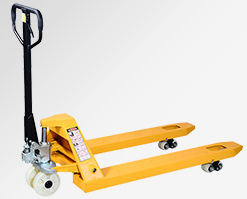News Details
Safe and efficient application of manual forklifts for material handling in furniture factory workshops
In the furniture manufacturing industry, the handling of workshop materials is an important link in the production process. In order to improve efficiency and ensure job safety, many small and medium-sized furniture factories choose to use manual forklifts as their main handling tools. Manual forklifts have become an ideal choice for short distance transportation in workshops due to their simple operation, strong flexibility, and low maintenance costs.
Manual forklifts are mainly operated manually to lift and move goods. Its structure is simple and does not require electric or fuel drive. It can lift and transport heavy objects solely relying on hydraulic principles. In furniture factories, manual forklifts are commonly used to transport materials such as wooden boards, hardware accessories, and semi-finished furniture, especially suitable for flexible turnover in workshops with limited space.

The operation of manual forklifts is very easy to learn, and workers only need to undergo simple training to master it. When in use, insert the fork into the bottom of the pallet and lift the goods smoothly by manually pumping the lifting handle; When pushing the forklift, the hydraulic system can automatically maintain load balance to prevent the goods from tilting or slipping. In addition, manual forklifts are usually equipped with wear-resistant rubber wheels, which can protect the ground and reduce noise, making them very suitable for the environmental needs of furniture factories.
Manual forklifts, with their economical, practical, safe, and efficient characteristics, have become powerful assistants for material handling in furniture factory workshops. By standardizing operations and daily maintenance, enterprises can not only improve production efficiency, but also effectively reduce the risk of work-related injuries, safeguarding safety production.

